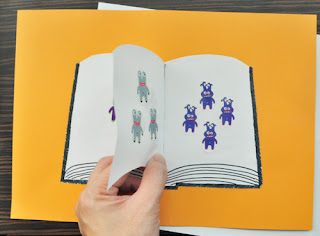Still on the topic of pre-lessons. Remember that there are four basic steps in pre-lessons:
1. calming oneself
2. deep and slow breathing
3. positive statements/suggestions
4. image training/image play
In the next few posts, I will talk about image training.
Image training is the most important thing in right brain education, because visualisation is fundamental to all aspects of right brain training, eg. Senses Play (ESP games), mental calculation, speed reading and photographic memory. Image training trains the children to visualise and to represent something mentally, and to capture and hold that image. A child or adult who can visualise with perfect representation an object from the physical environment and who can mentally change this image at will has perfected this function.
For adults, there are many ways to do image training. Professor Shichida talks about training using actions, training using audiotapes, ESP games (after visualization), dream control method, life energy training (‘kiko’), aura viewing training, use of paramemory, sun viewing method, image training with candles (like Henry Sugar!) and "after image" training.
Let me explain "after image" training. This exercise is for the parents and for older children (4 years and above). Shichida encourages parents to develop their right brain so that they can influence their children via "the radar effect". Shichida says that, if there is a child who is able to perform computer-like calculations, or has demonstrated telepathic abilities, etc., it has been found that the children around him are also able to do similar things. If you bring a child who has not been able to demonstrate any of these abilities into the group, that child will soon be able to do similar things as the rest of the group. This effect is called “the radar effect”.
Ok, this "after image" exercise uses an orange card with a small blue circle in the centre. All Shichida parents are issued this card at the Parents Education seminar. You can use other images too, once you understand how it is done.
Breathe deeply, relax your mind, and stare at the blue circle for 30 seconds. Then, close your eyes and you will see the "after image". If it disappears just tell yourself, “It will reappear.” And it will. Initially, the "after image" will be in opposite colours, that is, the blue circle will appear orange. With further practice, you will eventually be able to see the blue circle in its correct colour in your "after image". Continue practicing until you can CHANGE the colour and shape of your "after image", for instance, a red circle, then a green square. When you reach that stage, you should be able to see images spontaneously (you can see a free image). The objective is to see yourself in an image. Then you can visualise yourself getting a hole in one in golf!
For children, Professor Shichida recommends the following games for image training:
1) Return to the womb;
2) Become a teeny tiny person;
3) Pretend play;
4) Imaginary story;
5) Stick image; and
6) Orange card image training.
The ones we use more often are (1) stick image (basic image training), (2) pretend play, (3) imaginary story, and (4) orange card image training/"after image" training (for children who are four years old and above who can verbalise their thoughts). These are fun children’s games which involve imaging and visualisation. I will explain these in the next instalment.










































